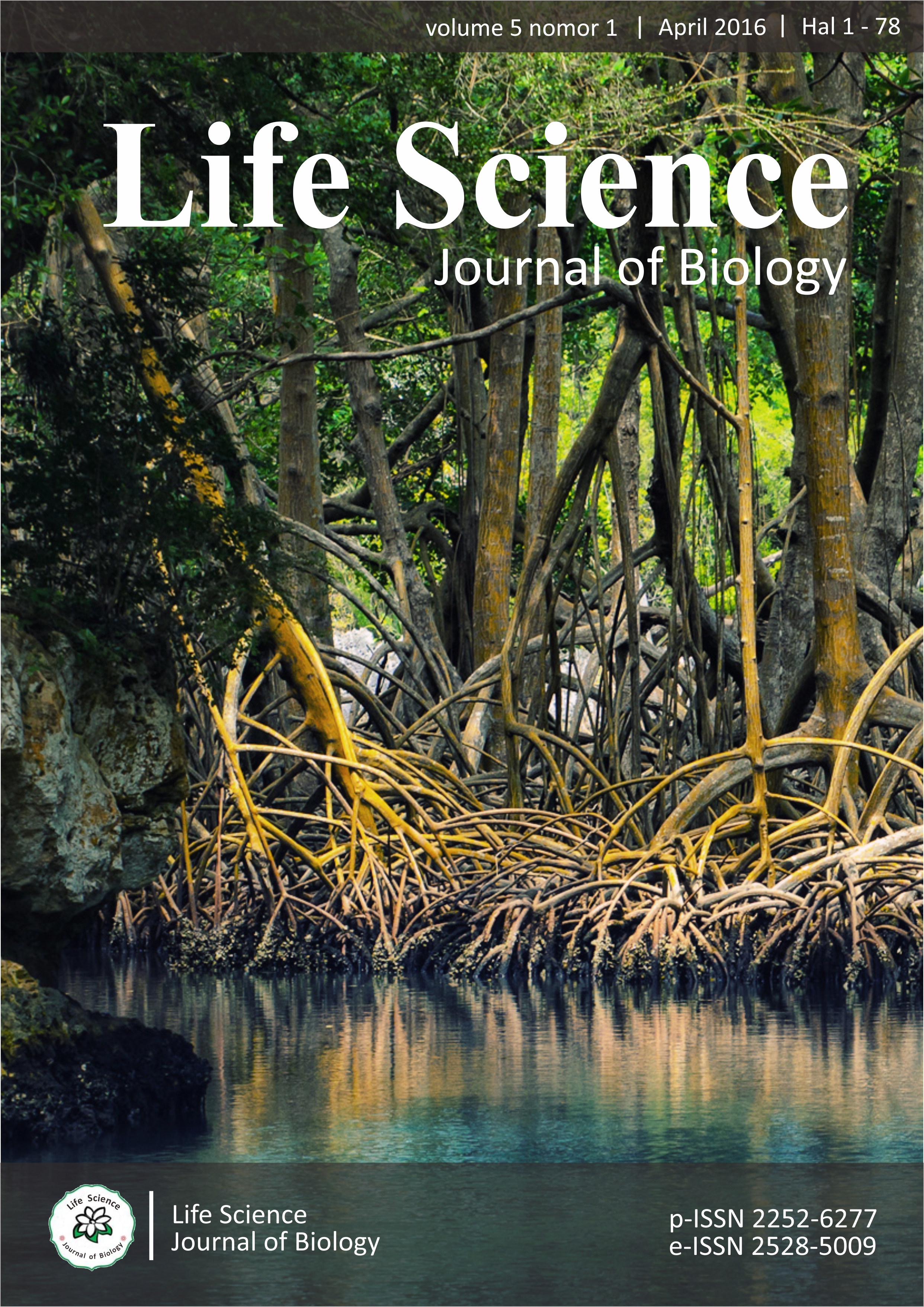KALOGENESIS EKSPLAN SETENGAH BIJI KORO BENGUK (Mucuna pruriens L.) SECARA IN VITRO MENGGUNAKAN BAP DAN NAA
Main Article Content
Abstract
Koro benguk (Mucuna pruriens L.) adalah salah satu jenis kacang-kacangan lokal yang bisa digunakan sebagai pengganti kedelai dalam pembuatan tempe. Biji koro benguk merupakan sumber terbesar dari L-Dopa yang menjadi prekursor neurotransmitter digunakan untuk pengobatan penyakit Parkinson. Ekstraksi L-Dopa dalam skala besar membuat populasi Mucuna di alam bebas semakin terbatas. Sehingga, salah satu cara memperoleh bibit yang bermutu tinggi dapat dilakukan dengan perbanyakan tanaman secara in vitro. Penelitian ini bertujuan untuk menentukan respon dan konsentrasi BAP dan NAA yang optimum dalam kalogenesis eksplan setengah biji koro benguk. Rancangan dalam penelitian ini menggunakan rancangan acak lengkap pola faktorial 4x4 dengan perlakuan konsentrasi BAP (2, 3, 4, 5 ppm) dan NAA (0.2; 0,4; 0,6; 0,8 ppm) dengan dua ulangan. Parameter yang diamati adalah waktu inisiasi kalus, persentase eksplan yang berkalus, diameter kalus, warna dan tekstur kalus. Analisis data menggunakan anava dua arah dan uji lanjut Beda Nyata Terkecil. Hasil penelitian menunjukkan interaksi BAP dan NAA berpengaruh nyata terhadap waktu berkalus dan persentase berkalus, sedangkan konsentrasi NAA berpengaruh nyata terhadap diameter kalus eksplan setengah biji Mucuna pruriens. Kombinasi perlakuan yang direkomendasikan dalam penelitian kalogenesis ini adalah perlakuan BAP 2 ppm dan NAA 0,2 ppm karena kombinasi perlakuan tersebut memerlukan waktu berkalus paling pendek, memiliki persentase eksplan yang berkalus & diameter kalus paling besar, kalus berwarna hijau dan tekstur kalus yang friable.
Mucuna puriens L. is one of the local leguminoceae which has many variety and used as a main material to substitute the soybean. The seed of M. pruriens are reported to contain L-3,4-dihydroxyphenylalanine (L-Dopa), a neurotransmitter precursor, used in the treatment of Parkinson’s disease. Large-scale extraction of L-Dopa from the wild populations of this plant has led to its limited availability in natural condition. Therefore, in vitro plant culture techniques may be an effective alternative for produce high quality seed. These objectives of this study are to determine the half-seed explants responses and the optimal concentration of BAP and NAA besides it also the interaction between them in caulogenesis. The experiment had been conducted by using 16 combination of BAP (2, 3, 4, 5 ppm) and NAA (0.2; 0,4; 0,6; 0,8 ppm) with Completely Randomized Design (CRD) in 4x4 factorial pattern by two replicates. The emerging of callus, the percentage, callus diameter, color and textur of the callus were the indicators observed. Collected data were analyzed using anova and followed by Least Significance Difference (LSD) (α=5%). The result of this research showed that the interaction of BAP and NAA affect in callus growth process (growth process and growth percentage) on half seed explant of Mucuna pruriens, meanwhile the concentration of NAA affect in the size of callus diameter. Combination treatment recommended in this research were BAP 2 ppm and NAA 0,2 ppm.


